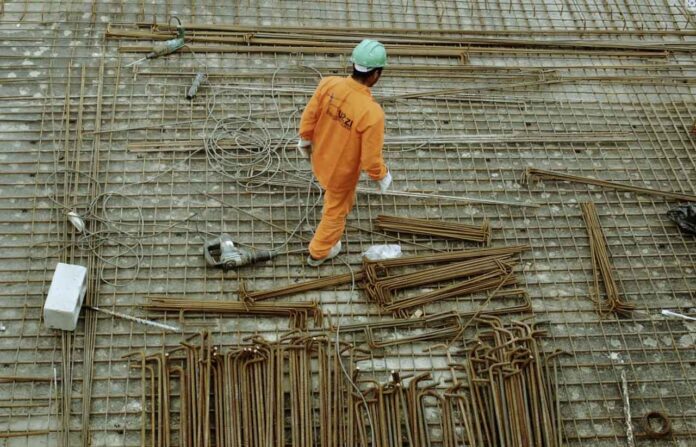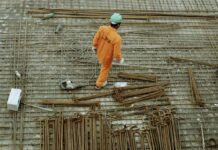As of today, scientists have discovered around 4,000 minerals scattered across the world, many of which contain metallic elements. Minerals are naturally occurring inorganic substances found within the Earth’s crust. One such mineral from nature’s bounty is asbestos.
It is a fibrous mineral widely known to resist corrosion, fire, and heat. Asbestos was discovered in the late 1870s in southeastern Quebec. Naturally, Canadians were the first ones to establish commercial asbestos mines. For decades, this mineral was used in building materials, gaskets, automobile clutches, and brakes, as well as heat-resistant fabrics.
Soon enough, its health dangers became apparent, which is why asbestos production, import, and sales were banned in 1989. Can this mineral’s fibers still cause harm today? If yes, the most vulnerable parties would be construction workers. In this article, we will discuss the three best workplace safety practices to deal with and remove hazards like asbestos.
Understanding the Likelihood of Exposure
Before commencing any construction project, employers and employees owe themselves to understand the scope of asbestos exposure. To answer simply whether it is possible to get exposed to asbestos fibers today, the answer is a resounding yes. This is because all buildings constructed until 1989 were erected using asbestos for roofing, insulation, flooring, walls, and more.
Moreover, the Environmental Protection Agency (EPA)’s Asbestos Ban and Phase-Out (ABPO) rule of 1989 was overturned by the US Court of Appeals for the Fifth Circuit in 1991. This means some asbestos-containing products are still in circulation to this day. Thankfully, the Biden-Harris administration finalized a ban on chrysotile asbestos in 2024.
However, even that involves a 12-year phase-out period. People continue to be exposed to asbestos, with shipbuilders, railroad contractors, power plant employees, and construction workers being the most vulnerable parties. Those who may have inhaled the fibers have developed serious health issues like mesothelioma, asbestosis, and lung cancer.
Injured folks have filed asbestos lawsuits to seek compensation for their injuries, emotional suffering, lost wages, and medical expenses. The final settlement in each case will depend on factors like the severity of the diagnosis, the extent of asbestos exposure, and the amount of damages suffered.
According to TorHoerman Law, the average settlement amount may range between $1 million and $1.5 million. This in itself conveys how serious asbestos exposure can become. Do not take a risk and get to know the likelihood of asbestos exposure beforehand. If you suspect that some material may have asbestos, stop work and notify your employer promptly.
Proper Training
A second important measure that employers must take is conducting training sessions. Some workers may simply be aware that asbestos was used in building materials, and was banned. They may be unaware of the extent of this ban, its implications, as well as the presence of asbestos today.
The truth is asbestos poses zero to minimal health risks if left undisturbed. It’s only when its fibers get released into the air that there arises the danger of inhalation. Employers need to organize safety training sessions to educate construction workers about asbestos. Ideally, the sessions should include topics like –
- Background information on asbestos
- Available worker protection programs
- How to wear protective equipment properly, which may include respirators, hard hats, gloves, shoes, and more
- Health risks associated with the mineral
- Ways to avoid exposure
- Location of asbestos-containing materials
- Recognition of damage caused by these materials and deterioration
Thorough Inspection and Planning
Every construction employer is responsible for establishing a project plan with proper control measures. It is best to inspect a construction or renovation site thoroughly and develop a work plan that covers all crucial areas of safety.
In the case of asbestos, employers can start by jotting down which workers are most likely to encounter asbestos and even disturb its fibers. For instance, those working on a building’s structure would expose themselves to asbestos during retrofitting, demolition, or maintenance work.
Moreover, some projects inherently become high-risk for workers when –
- No information regarding asbestos-containing materials has been passed down to the employer or workers
- Workers have not had proper training on how to handle and dispose of asbestos safely
- A building had been constructed or refurbished before 2000
- Workers try to slack on safety procedures to save time or for convenience
Whether the construction project including asbestos is licensed or non-licensed, each part of the site or building must be thoroughly inspected. It is not uncommon for workers to accidentally come across asbestos. By then, it may be too late. Plans when proactively carried out can prevent asbestos fibers from being disturbed.
As we wrap up, let’s reiterate the importance of being aware of asbestos exposure. This includes practicing mindfulness right from the start of a project up until its completion.
As stated by the EPA, the Agency along with the Occupational Safety and Health Administration (OSHA), holds the regulatory responsibility for workers exposed to asbestos. However, safety measures need to be implemented at organizational and individual levels.
Workers must be careful to obey warning signs, employer control measures, and work plans. Finally, smoking, drinking, or eating must be avoided in exposure areas and decontamination procedures must be followed religiously. In construction, the safety of people is the highest law.







